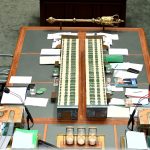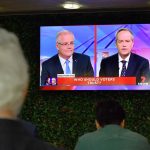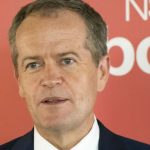Closing the diversity gap in TV news

Australia’s television news media acutely lacks cultural and linguistic diversity (CALD), according to new research by four Australian universities in partnership with Media Diversity Australia (MDA).
The Who Gets To Tell Australian Stories? report provides the first comprehensive picture of who tells, frames and produces stories in Australian television news and current affairs. It spotlights the experiences and
representation of culturally diverse television news and current affairs staff.
It is also the first forensic examination of how our media treats cultural diversity at the workplace level.
The study reveals that more than 75% of presenters, commentators and reporters have an Anglo-Celtic background while only 6% have an Indigenous or non-European background, as measured by frequency of appearance on screen in news and current affairs broadcasts.
In an opt-in survey completed by more than 300 television journalists, more than 70% of participants rated the representation of culturally diverse men and women in the media industry as either poor or very poor.
In addition, 77% of respondents with culturally diverse backgrounds believe their backgrounds are a barrier to career progression.
The Representation Gap
The study mapped the cultural backgrounds of editorial leaders in television newsrooms and the composition of television network boards. 100% of free-to-air television national news directors have an Anglo-Celtic background (and they are all male).
The board members of Australian free-to-air television are also overwhelmingly AngloCeltic. Within this group of 39 directors, there is only one who has an Indigenous background and three who have a non-European background.
This is in a nation where an estimated 58% of Australians have an Anglo-Celtic background, 21% have a non-European background, 18% have a European background and 3% have an indigenous background.
“Based on three data sets and a series of interviews, we identified a distinctive gap in representation between those reporting Australia’s news and current affairs and the broader Australian population,” chief investigator Professor Catharine Lumby from Macquarie University Department of Media, Music, Communication and Cultural Studies said about the three year study.
“It is abundantly clear that Australian television news and current affairs media doesn’t reflect its audience and this has a flow on effect as to which stories are covered and how they are framed and told,” MDA Director and senior journalist Antoinette Lattouf said.
“We continue to see all white panels who are there to comment on issues impacting our very multicultural nation — on both commercial TV and the ABC. Unless we see change in both the composition of leadership teams and talent on screen — our media will remain disconnected from audiences whose engagement is already waning,” MDA chair Isabel Lo said.
The research also included in-depth interviews with editorial leaders from all free-to-air television networks.
“In these interviews, most recognised that their outlet failed to reflect their audience, but there remains some ambivalence towards having formal diversity and inclusion policies,” Lumby said.
More Inclusive Newsrooms
The study also looked to media markets in the United States and United Kingdom and found that Australian television news media is a laggard on both the representation of diversity and organisational responses to the issue. It noted missed opportunities locally to capitalise on the commercial benefits of a more diverse media.
“There’s no doubt the traditional business model of free-to-air television is struggling. That’s due to a range of factors. But in an online and streaming media environment where the competition for viewers is more intense than ever having more diverse staff means a greater capacity to speak to and grab the attention of diverse audiences. It makes good business sense,” Lumby said.
A series of recommendations are made in the report to achieve more representative newsrooms.
News and current affairs organisations must collect meaningful data on cultural diversity among staff, establish targets to increase cultural diversity in the talent pipeline and the senior leadership suite and account for the civic and business benefits of a more culturally diverse media in their decisions on who tells our stories.
The academic partners in this report include Macquarie University, Deakin University, University of Sydney and Western Sydney University. Funding was provided by Google News Lab and MEAA, and in-kind support was given by Telum Media and Isentia.
Open Forum is a policy discussion website produced by Global Access Partners – Australia’s Institute for Active Policy. We welcome contributions and invite you to submit a blog to the editor and follow us on Twitter, Facebook, Linkedin and Mastadon.













